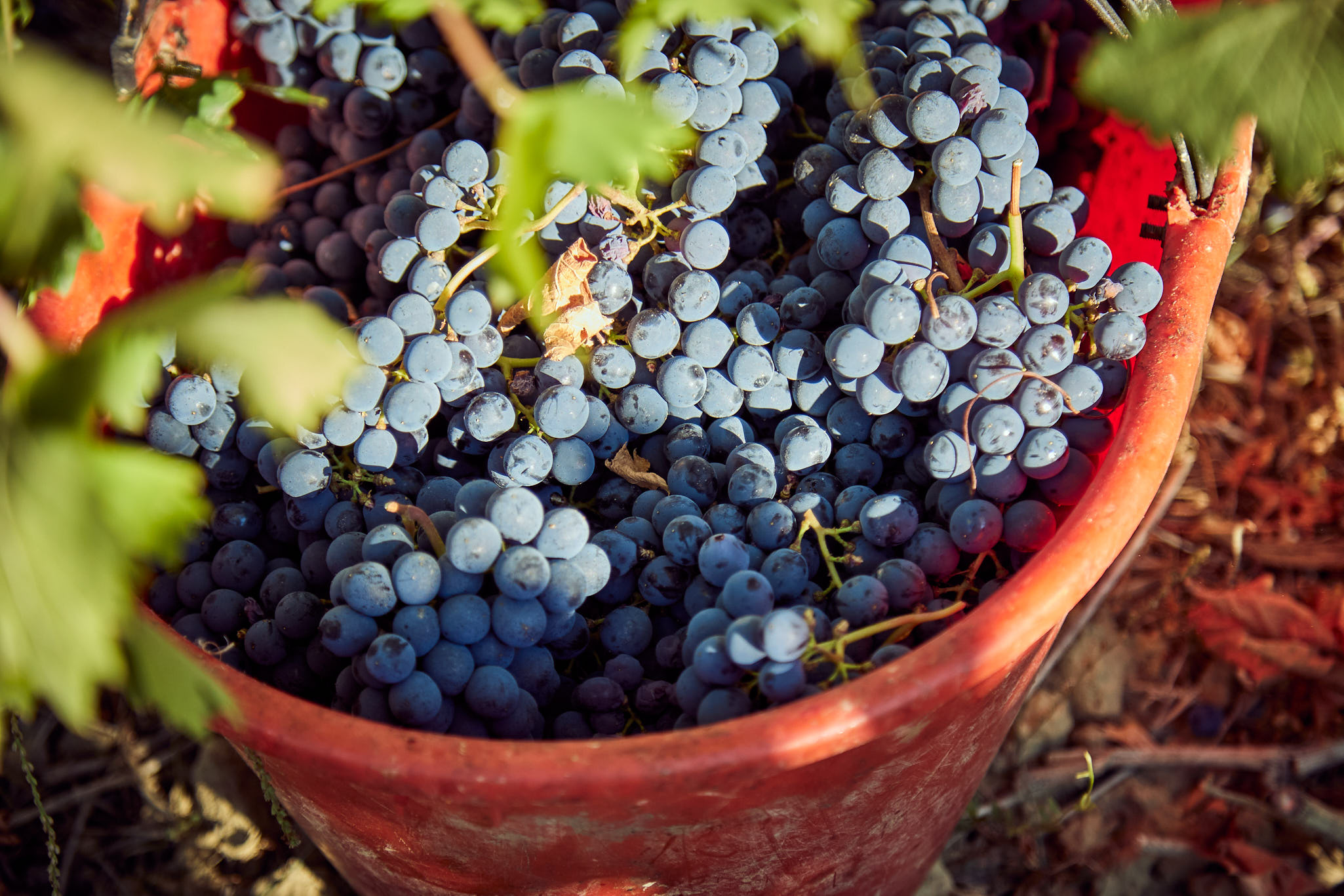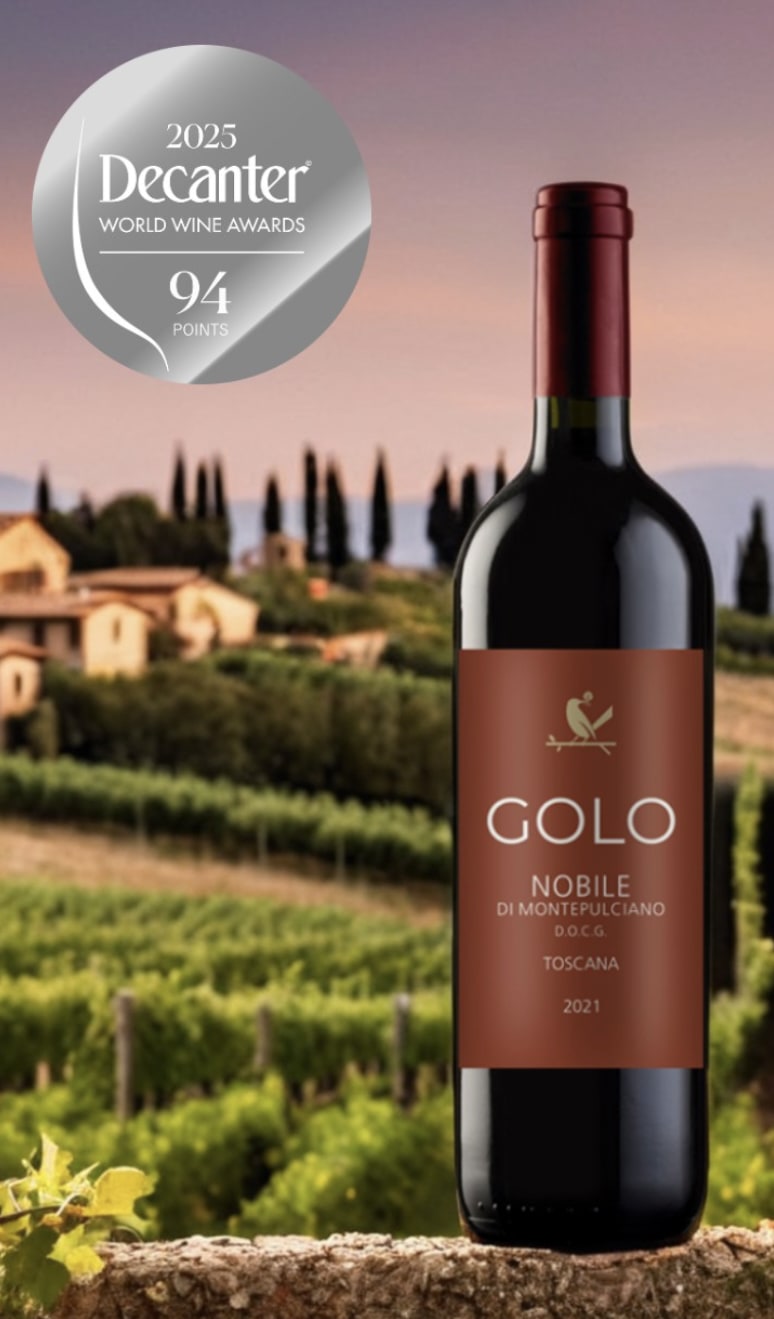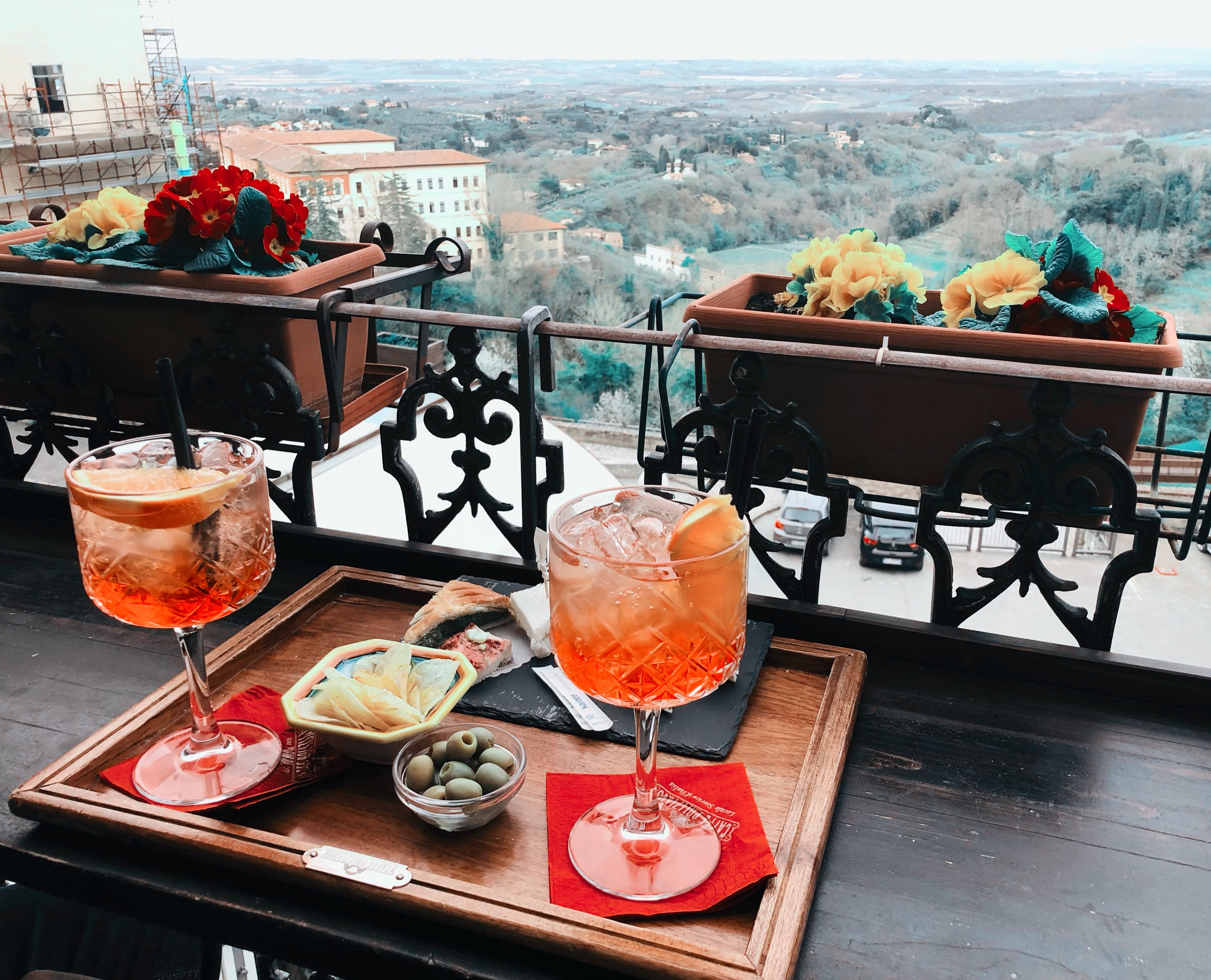Wine Appreciation Course Guide for Beginners (2025)
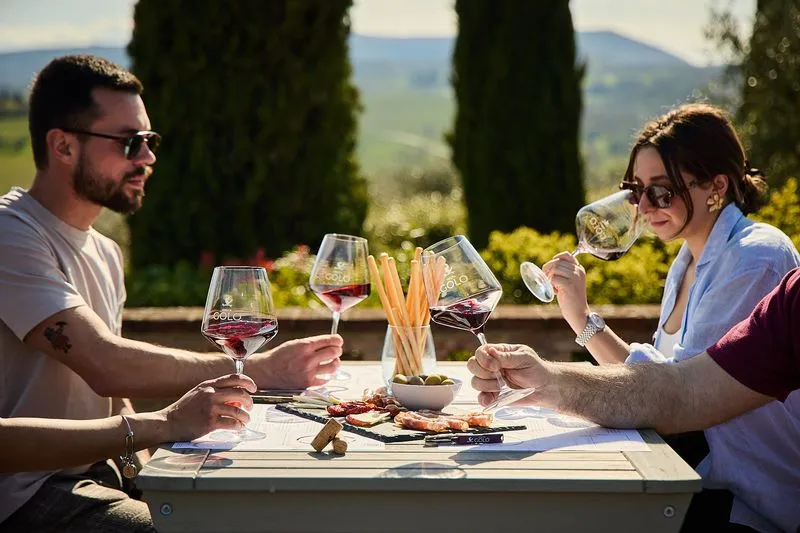
Wine transforms ordinary moments into extraordinary experiences. The world of wine is rich with history, artistry, and a sense of discovery that turns simple sipping into a lifelong passion.
This guide is designed to help you begin your journey with confidence. Whether you are curious about how a wine appreciation course works or eager to decode the secrets behind every glass, you will find a clear, step-by-step roadmap here.
You will explore the essentials—from understanding wine styles and tasting techniques to mastering key terms and choosing the right course format. Along the way, practical tips and expert advice will help you start your wine appreciation journey with skill and enjoyment.
Are you ready to savor more than just a drink? Let’s begin your adventure into the world of wine.
Understanding the Basics of Wine
Wine is more than a beverage—it is a symbol of culture, history, and craftsmanship. For anyone starting a wine appreciation course, understanding the foundations helps unlock a world of flavors and experiences. This section guides you through essential wine knowledge, from types and production to regions, labels, and serving techniques.
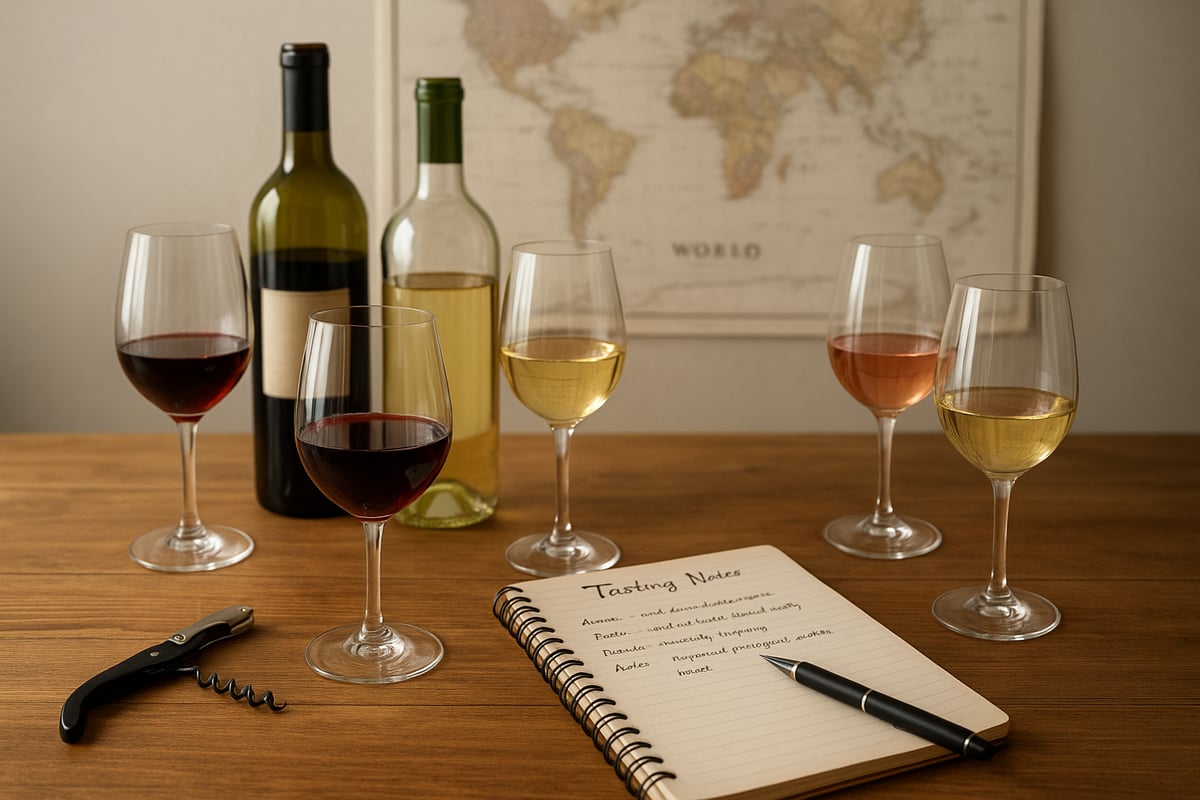
What Is Wine? Types and Varieties
Wine is an alcoholic drink made by fermenting grape juice, celebrated around the world for its diversity and complexity. According to recent data, there are over 10,000 grape varieties used in winemaking globally. The main wine types include red, white, rosé, sparkling, dessert, and fortified wines. Each type offers unique profiles, influenced by grape variety and region.
Common examples are Cabernet Sauvignon (red), Chardonnay (white), Prosecco (sparkling), and Port (fortified). Major grape-growing regions include France, Italy, Spain, the USA, and Australia. Understanding these basics is crucial for anyone embarking on a wine appreciation course. If you want a comprehensive beginner's overview that covers grape varieties, regions, and tasting tips, consider exploring the Wine 101 – Foundation Online Course™.
The Winemaking Process Explained
The journey from grape to glass follows five main steps: harvesting, crushing, fermentation, aging, and bottling. Each step shapes the wine's flavor, aroma, and texture. For example, fermentation can occur in stainless steel tanks for a fresh, crisp style or in oak barrels for added depth and spice.
Natural winemaking uses fewer additives and interventions, while conventional approaches may use selected yeasts or fining agents. The process you learn in a wine appreciation course will reveal how subtle choices impact the finished wine in your glass.
Key Wine Regions Around the World
Wine regions are often divided into Old World (Europe) and New World (Americas, Australia, New Zealand, South Africa) categories. Old World areas like Bordeaux and Tuscany are known for tradition and terroir-driven wines, while New World regions such as Napa Valley, Mendoza, and Marlborough offer innovation and bold flavors.
Climate plays a vital role in shaping wine style. Cool climates produce lighter, more acidic wines, while warmer areas yield fuller-bodied, fruit-forward wines. Exploring regional diversity is a core part of any wine appreciation course.
Wine Labels and What They Mean
Decoding a wine label is an essential skill. Labels typically include the vintage year, grape varietal, region, and producer. You may also see quality terms such as DOCG (Italy), AOC (France), or AVA (USA), which indicate origin and production standards.
For example, Italy’s DOCG status ensures strict quality controls, while France’s AOC marks a wine’s geographic authenticity. Understanding label terminology is a key focus in a wine appreciation course and helps you make informed choices.
Wine Storage and Serving Fundamentals
Proper storage and serving protect wine quality. Store bottles horizontally in a cool, dark place with stable temperature (10–15°C) and moderate humidity (50–70 percent). Avoid sunlight and vibration.
Serve white wines chilled (7–13°C), reds slightly below room temperature (15–18°C), and sparkling wines well-chilled. Use clean, clear glasses with a slight bowl shape. When opening, cut the foil below the lip and use a corkscrew gently. Decant young reds to soften tannins and older wines to separate sediment. These fundamentals, covered in any wine appreciation course, ensure your wine is enjoyed at its best.
The Art of Wine Tasting: Step-by-Step Guide
Wine tasting is the heart of every wine appreciation course. It transforms theory into sensory experience, helping you decode each glass with confidence. Whether you are new to wine or seeking to refine your palate, mastering these steps will unlock a world of flavor and aroma.
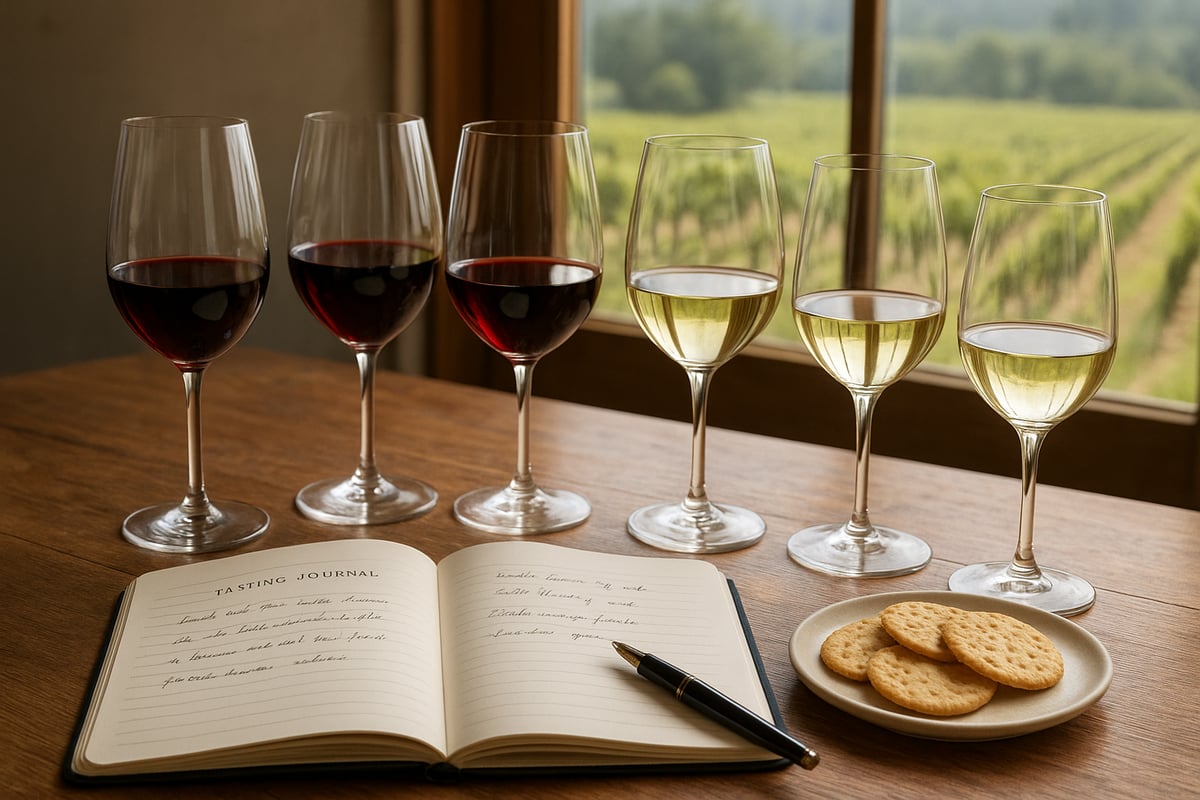
Preparing for a Tasting
Setting the stage is vital for an effective wine appreciation course. Select a well-lit room with minimal distractions and neutral aromas. Use clear, tulip-shaped glasses to capture the wine’s scent and flavor. Prepare palate cleansers, such as plain crackers or bread, to reset your taste buds between samples.
Keep group sizes small, ideally four to eight people, to foster focused discussion. The environment should be calm, with minimal noise and scent interference. For those practicing outside a formal wine appreciation course, these wine tasting at home tips offer practical ways to replicate a professional setting.
Remember, a neutral environment helps you assess each wine’s true character.
Step 1: Observing the Wine
Visual assessment is the first skill taught in any wine appreciation course. Hold your glass at an angle against a white background. Examine the wine’s color, clarity, and viscosity.
Color reveals clues about grape variety and age. Young reds tend to be vibrant purple, while aged reds show brick or brown hues. Whites shift from pale straw to deep gold as they mature. Clarity indicates quality; a hazy appearance might signal a fault.
Viscosity, seen as “legs” or “tears” on the glass, hints at alcohol and sugar content. Take your time with this step, letting your eyes guide your expectations.
Step 2: Smelling the Wine
Aromatics are central to every wine appreciation course. Swirl the glass gently to release volatile compounds. Place your nose just above the rim and inhale deeply.
Identify primary aromas (fruit, floral), secondary aromas (from fermentation), and tertiary notes (from aging). For example, a Sauvignon Blanc may evoke citrus and grass, while an aged Bordeaux offers leather and tobacco.
Common descriptors include apple, cherry, violet, vanilla, earth, and spice. Try to name at least three aromas for each wine, building your sensory vocabulary. This skill will grow with practice and exposure.
Step 3: Tasting the Wine
Now, take a small sip, letting the wine coat your entire palate. A quality wine appreciation course teaches you to assess mouthfeel, acidity, tannin, sweetness, alcohol, and body.
Mouthfeel describes texture, from silky to grippy. Acidity brings freshness; tannins add structure. Sweetness and alcohol should be in balance, supporting the wine’s body. Compare a high-acid Sauvignon Blanc to a full-bodied Shiraz to experience these contrasts.
Focus on harmony. No single element should overwhelm the rest. This analysis is key to understanding what makes a wine truly enjoyable.
Step 4: Evaluating the Finish
The finish, or aftertaste, is the lingering impression left by the wine. In a wine appreciation course, you’ll learn to value both length and complexity.
A long, evolving finish is a hallmark of quality. Note whether flavors persist or fade quickly. Complexity means multiple layers—fruit, spice, earth—unfold as the wine lingers.
Watch for faults like cork taint (musty aroma) or oxidation (flat, sherry-like taste). Recognizing these issues is just as important as celebrating a wine’s strengths.
Keeping Tasting Notes
Structured note-taking is essential in any wine appreciation course. Record your observations for appearance, nose, palate, and finish. Use a simple table or tasting journal to organize your thoughts:
| Step | Details |
|---|---|
| Appearance | Color, clarity, viscosity |
| Nose | Aromas, intensity |
| Palate | Flavors, texture, balance |
| Finish | Length, complexity |
Many beginners use apps or templates. The WSET Systematic Approach is a popular framework. Over time, your notes will help track preferences, spot patterns, and measure progress.
Common Tasting Mistakes and How to Avoid Them
Mistakes are part of learning in any wine appreciation course. Avoid overpowering scents in the room, such as perfume or candles, which can mask subtle aromas.
Always cleanse your palate between wines to maintain accuracy. Rushing through the steps often leads to missed details—slow down and savor each stage.
Practice improves precision. If unsure, revisit your notes and compare with others. Over time, your skills and confidence will grow, making each tasting richer and more rewarding.
Essential Wine Terminology and Concepts
Wine knowledge is built on a foundation of essential terminology and concepts. Whether you are taking a wine appreciation course for the first time or expanding your understanding, mastering the language of wine unlocks a new world of sensory enjoyment. Let us explore key terms, the influence of terroir, common faults, and the basics of food and wine pairing.
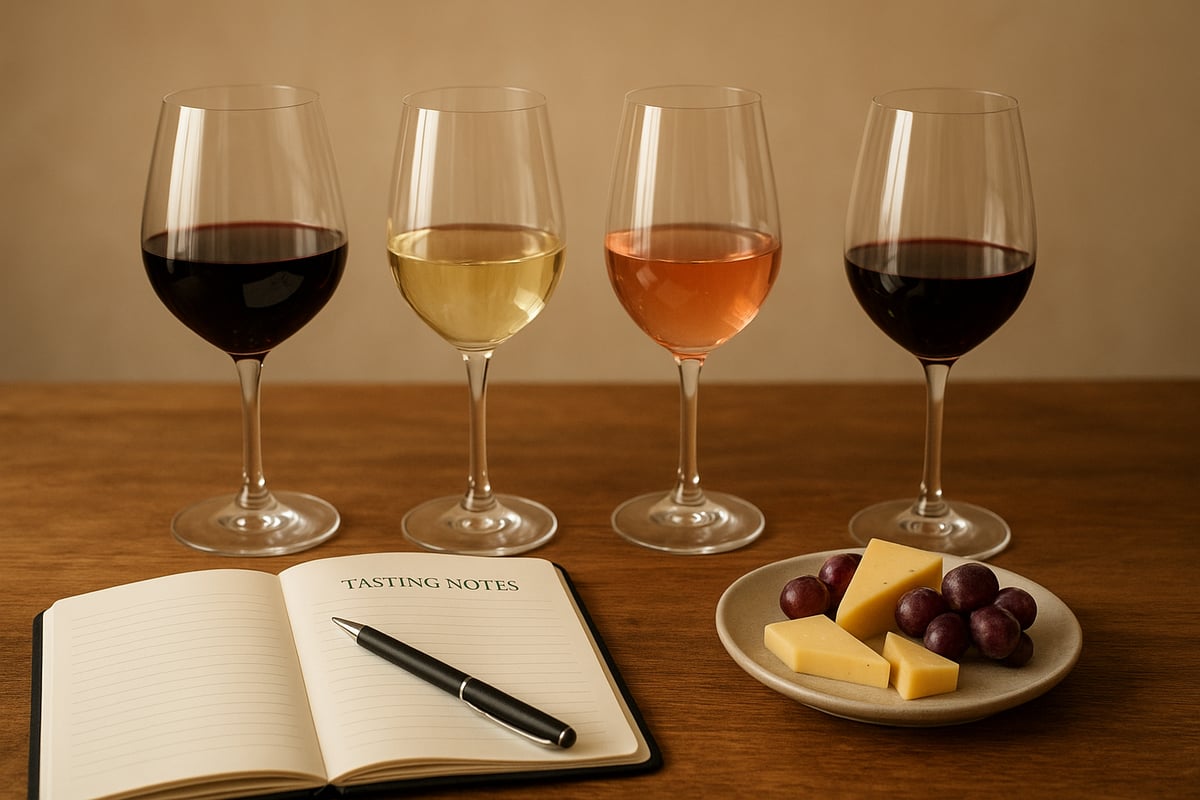
Glossary of Key Wine Terms
Understanding wine terms is the first step in any wine appreciation course. Here are some of the most important:
| Term | Definition | Example |
|---|---|---|
| Tannin | Natural compound from grape skins and seeds | Strong in Cabernet Sauvignon |
| Body | Weight and fullness on the palate | Full-bodied Shiraz |
| Terroir | The environment where grapes are grown | Burgundy Pinot Noir terroir |
| Bouquet | The complex aromas from aged wine | Aged Bordeaux |
| Legs | Wine droplets forming on glass after swirling | Seen in higher alcohol wines |
| Vintage | Year grapes were harvested | 2020 Napa Valley Cabernet |
| Cuvée | Blend or special batch of wine | Champagne cuvée |
If you want a deeper dive into these basics, Wine 101 | Wine Course | Wine Folly offers beginner-friendly explanations and visuals.
Understanding Terroir and Its Impact
Terroir is a central concept in any wine appreciation course. It refers to the unique combination of soil, climate, topography, and even vineyard practices that influence a wine's character.
Soil type affects drainage and mineral content, while climate shapes ripeness and acidity. For example, Burgundy Pinot Noir reflects its terroir with distinct earthiness and elegance. Recognizing terroir helps you appreciate why wines from different regions taste unique.
A wine appreciation course will often include tastings that highlight these differences, allowing you to connect theory to the glass.
Wine Faults and Flaws
Every wine appreciation course addresses faults that can spoil your experience. The most common are:
- Corked: Caused by TCA, giving musty, damp aromas.
- Oxidized: Air exposure leads to dull, sherry-like flavors.
- Brettanomyces: Yeast causing barnyard or medicinal notes.
About 5% of wines suffer from cork taint (Wine Spectator, 2023). Learning to identify these faults builds confidence and ensures you know when a wine is not showing its best.
Reporting a faulty bottle is a normal part of wine appreciation and helps maintain quality standards.
Food and Wine Pairing Basics
Pairing food and wine is a highlight of a wine appreciation course. The two main principles are complementing or contrasting flavors.
- Complement: Match rich reds with steak or hearty dishes.
- Contrast: Pair crisp whites with spicy or salty foods.
Classic pairings, such as Sauvignon Blanc with goat cheese or Pinot Noir with roast chicken, are great starting points. Experiment confidently, and remember that personal preference is key.
A wine appreciation course will often include guided tastings with food, helping you discover combinations you enjoy most.
Choosing the Right Wine Appreciation Course
Selecting the ideal wine appreciation course can be a transformative step in your wine journey. With a growing range of options in 2025, knowing how to compare formats, content, and value ensures you gain the most from your investment. The following sections will guide you in making a confident, informed choice.
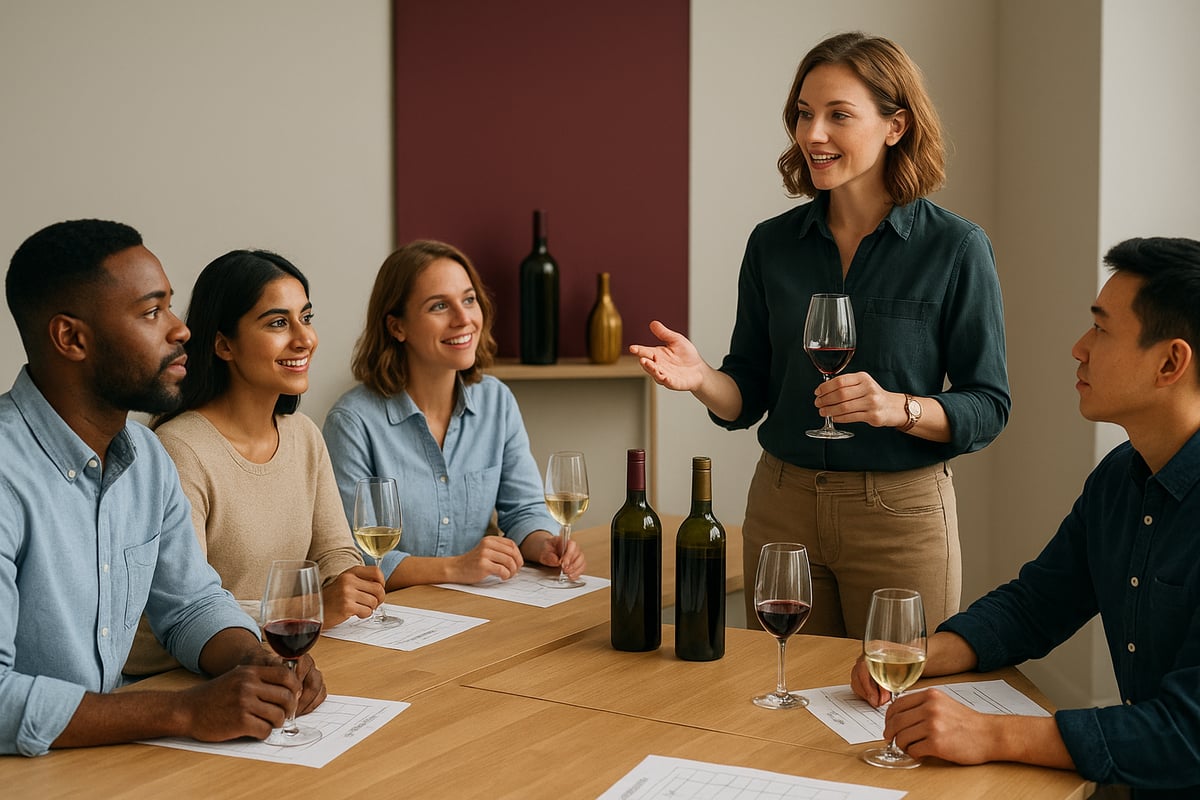
In-Person vs. Online Courses
When choosing a wine appreciation course, your first decision is between in-person and online formats. In-person courses offer hands-on tasting, immediate feedback, and networking with peers. Online options provide flexibility and access to global experts, making them ideal for busy schedules or remote locations.
| Feature | In-Person Course | Online Course |
|---|---|---|
| Interaction | High | Moderate |
| Flexibility | Low | High |
| Tasting | Guided, live | At-home, self-guided |
| Cost | Often higher | Often lower |
To understand what to expect from each format and make the best choice, explore this Choosing a wine course resource for detailed guidance.
Course Content and Structure
A strong wine appreciation course should cover essential topics such as wine history, tasting techniques, and major wine regions. Look for structured modules that build foundational knowledge and offer practical tasting sessions. Recognized certifications, like WSET or the Court of Master Sommeliers, provide clear learning pathways and are valued in the industry.
Course duration can range from a single day to several weeks. Assessments may include quizzes, tasting exams, or written assignments. Choose a program whose structure matches your learning style and commitment level.
What to Look for in a Beginner Course
When evaluating a beginner wine appreciation course, prioritize instructors with certified expertise and a passion for teaching. Small class sizes foster better interaction and personalized feedback. Seek out courses that include guided tastings, as hands-on practice is essential for developing your palate.
Reviews and testimonials from past students can offer valuable insights into course quality and outcomes. Alumni feedback often highlights the most engaging and beneficial aspects of a program, helping you make a well-informed decision.
Costs and Value for Money
Wine appreciation course prices vary widely. In 2024, expect to pay between $100 and $500 for a reputable beginner course. This fee typically includes study materials, tasting samples, and examination costs. Some providers offer scholarships or group discounts, making wine education more accessible.
Consider what is included in the price. Courses with comprehensive resources and live tastings may offer greater value, even at a higher cost. Compare options carefully to ensure you invest wisely in your wine education.
How to Make the Most of Your Course
Maximize your wine appreciation course by actively participating in discussions and tasting exercises. Engage with peers and instructors to build your network and deepen your understanding. Take advantage of any supplementary materials or recommended reading lists provided.
After completing your course, continue expanding your skills through tasting groups, events, or advanced classes. Lifelong learning and consistent practice will ensure your appreciation for wine continues to grow and evolve.
Building Your Wine Appreciation Skills Beyond the Course
Embarking on a wine appreciation course is just the beginning. To truly grow your palate and deepen your understanding, it is essential to continue learning beyond the classroom. The following strategies will help you transform theoretical knowledge into lifelong wine skills, making every glass a new discovery.
Practicing at Home: Tasting Groups and Journals
After completing a wine appreciation course, maintaining momentum is crucial. One effective way is to form or join a tasting group. These gatherings provide a relaxed environment to sample diverse wines, share impressions, and learn from others’ experiences.
Keep a wine diary to document each bottle, noting aromas, flavors, and personal preferences. Over time, this journal becomes a valuable resource, highlighting your progress and evolving tastes. Try themed tastings, such as comparing Sauvignon Blancs from different regions or exploring bold reds.
By practicing regularly, you reinforce the skills gained in your wine appreciation course, making learning enjoyable and social.
Visiting Wineries and Vineyards
Taking your wine appreciation course knowledge into the field offers unique benefits. Visiting wineries and vineyards allows you to witness the winemaking process firsthand and engage directly with passionate producers.
On-site tastings introduce you to local grape varieties and regional styles. Many wineries host tours during harvest season, providing opportunities to see grape picking and fermentation in action. Conversations with winemakers and sommeliers deepen your understanding of terroir and production choices.
These immersive experiences bridge the gap between theory and practice, helping you connect classroom concepts to real-world wine culture.
Attending Wine Events and Festivals
Wine events and festivals are ideal for expanding your palate and network after a wine appreciation course. Local and international gatherings, such as Vinitaly or the Bordeaux Wine Festival, offer access to a wide range of producers and styles.
At these events, you can attend guided tastings, seminars, and food pairings. Meeting fellow enthusiasts and industry professionals fosters valuable connections and insights. Sampling wines side by side sharpens your comparative tasting skills.
Participating in festivals keeps your learning fresh and introduces you to emerging trends, making your wine journey both dynamic and interactive.
Exploring Wine Literature, Podcasts, and Online Resources
To supplement your wine appreciation course, dive into books, podcasts, and digital communities. Recommended reads like "Wine Folly" or "The Oxford Companion to Wine" build foundational knowledge. Podcasts and YouTube channels offer expert interviews and tasting advice.
Engage with online forums where enthusiasts share reviews and recommendations. For a structured approach, the Wine Tasting Course Guide for Beginners: Master the Basics 2025 provides step-by-step learning and practical tips.
Leveraging diverse resources keeps your education ongoing, broadening your perspective long after your wine appreciation course ends.
Setting a Personal Wine Learning Goal
Setting concrete goals transforms your wine appreciation course experience into long-term growth. Define objectives such as tasting 50 grape varieties in a year or achieving a recognized certification.
Create a tasting calendar to structure your progress. Track milestones, whether it’s mastering blind tastings or exploring new wine regions each month. Personal goals keep you motivated and provide a sense of achievement.
Regularly reviewing your progress ensures continual advancement, making your wine journey purposeful and rewarding.
Common Challenges and How to Overcome Them
Even after a wine appreciation course, challenges may arise. Palate fatigue, complex terminology, and information overload can be daunting. To overcome these, pace your tastings and cleanse your palate between wines.
Break learning into manageable steps, focusing on one region or style at a time. Seek support from peers or mentors when concepts seem overwhelming. Stay curious and celebrate small victories along the way.
By tackling obstacles proactively, you maintain enthusiasm and steadily build your wine expertise beyond the initial wine appreciation course.
Frequently Asked Questions About Wine Appreciation Courses
Starting your journey with a wine appreciation course can bring up many questions. Below, we address some of the most common queries from beginners and enthusiasts alike. Each answer is designed to help you make informed decisions as you explore the world of wine.
Who Should Take a Wine Appreciation Course?
A wine appreciation course is ideal for anyone interested in deepening their understanding of wine. Beginners will gain foundational knowledge, while enthusiasts can refine their tasting skills. Hospitality professionals often take these courses to enhance their careers, as wine expertise is highly valued in restaurants and hotels.
If you enjoy exploring flavors, culture, and history, a wine appreciation course offers structured learning and practical experience. It is also perfect for those seeking to socialize and network with like-minded individuals. Whether your goal is personal enjoyment or professional advancement, this course provides valuable skills for all backgrounds.
How Long Does It Take to Appreciate Wine?
The journey of wine appreciation is unique for each person. With consistent practice and participation in a wine appreciation course, most learners notice significant progress within a few months. The pace depends on how often you taste, study, and engage with wine-related activities.
Frequent exposure to different wines, regions, and styles accelerates learning. Some individuals pursue certifications, which may require several weeks or months of study. However, the most important factor is ongoing curiosity and willingness to explore, as wine appreciation is a lifelong pursuit.
Can You Learn Wine Appreciation Without Formal Courses?
While a structured wine appreciation course offers guided learning, it is possible to develop your palate independently. Many resources exist for self-study, such as books, tasting groups, and online platforms. Beginners can benefit from Best Online Wine Courses to Take in 2025 to find flexible digital programs suited to various learning styles.
The main advantage of a formal wine appreciation course is expert feedback and interactive tastings. Self-learners should seek out community events and reliable resources to supplement their experience. Both paths can lead to a rewarding understanding of wine, depending on your preferences and goals.
After exploring the essentials of wine appreciation and discovering how a guided course can spark your passion for tasting, there’s no better way to put your new knowledge into practice than with a memorable, real-world experience. Imagine walking the historic grounds of Tenuta Golo, surrounded by the beauty of Montepulciano, as you sample expertly crafted Nobile di Montepulciano DOCG wines. It’s the perfect opportunity to deepen your understanding through all your senses and connect the theory to unforgettable moments. Ready to start your wine journey in style? Book Your Wine Tasting Now


